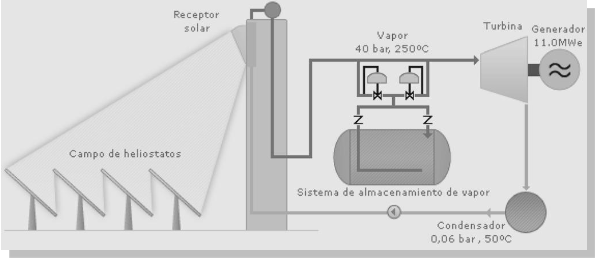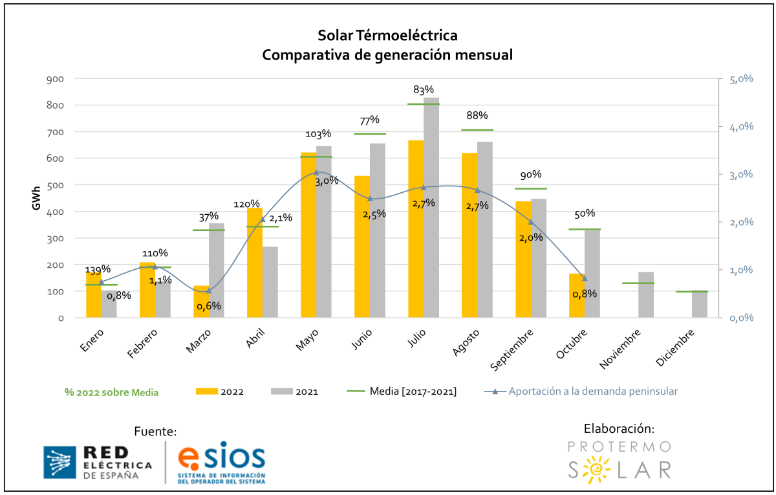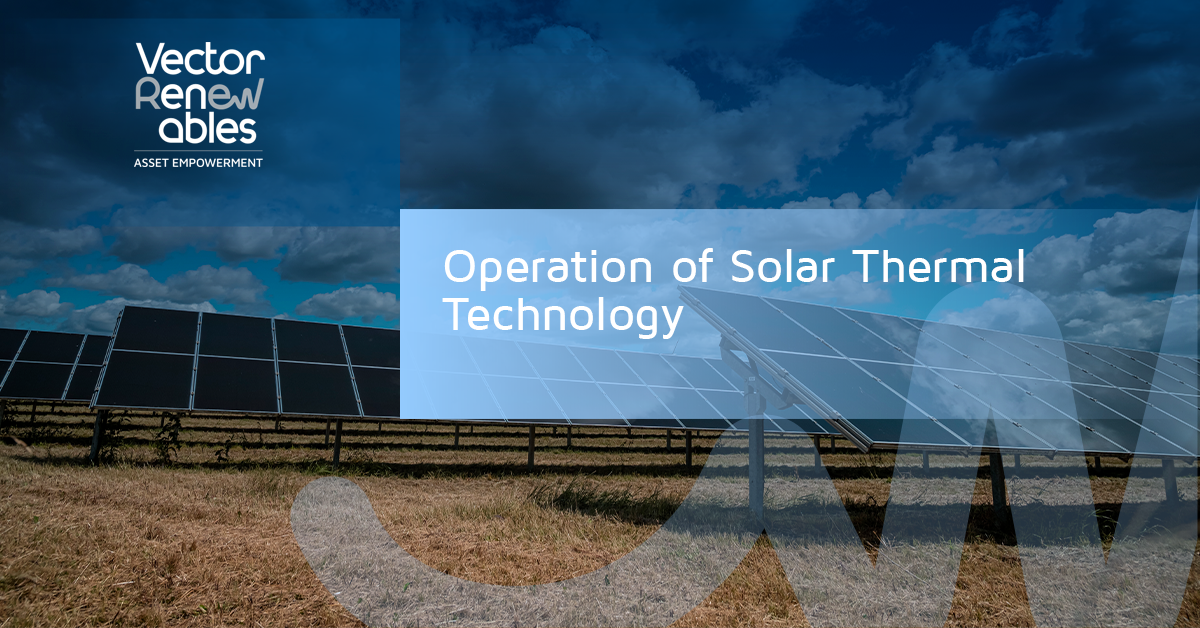Did you know that one of the ways to take advantage of sunlight to convert it into energy is through solar thermal power plants?
The 2030 agenda foresees that this technology will represent 7GW of the 157GW of installed capacity in Spain.
Unlike a photovoltaic plant, which uses sunlight to obtain electricity, this one is based on concentrating the sun's energy to obtain thermal energy.
The operation is similar to that of a thermal power plant, but instead of coal or gas, solar radiation is used. This is possible from the collectors, which capture and concentrate the energy that will heat the fluid that will circulate to generate steam to move a turbine that will produce electricity.
What is the specific process by which energy is obtained?
1. Solar energy concentrators (Heliostats), which have the function of capturing solar radiation and directing it towards the receiver. These
are composed of a reflecting surface formed by glass mirrors, a support structure and different control mechanisms that allow it to be oriented to follow the movement of the sun.
2. The receiver transfers the heat received to a working fluid (water, molten salts, etc.), which is responsible for transferring the heat to the next part of the plant. Normally this is transferred to a water tank, obtaining steam at high temperature to produce electricity through the movement of a turbine and pass to the transformer.

In terms of efficiency, these systems can achieve up to 35% peak efficiency and 25% annual solar electric efficiency when coupled with a combined cycle thermal power plant. This technology is very practical from a domestic point of view. The tower power plant can incorporate energy storage for up to 15 hours, allowing power to be provided in cloudy or pitch black conditions through the use of a water/steam or molten salt storage tank that stores the energy.
One of the great challenges of solar thermal energy is its discontinuity in time, but in the case of concentrating systems a second restriction is added, since these systems can only take advantage of direct solar radiation. This radiation cannot be stored, but the thermal energy transported by the heat transfer fluid can be stored, which allows the plant to operate in periods of absence or high variability of solar radiation.
There are several types of storage depending on the heat and chemical reactions that take place, although it should be noted that:
- Systems based on sensible heat store the thermal energy captured in the receiver in a medium with good properties for storing sensible heat in a given volume. The most commonly used media are thermal oils and molten salts.
- Latent heat associated with phase changes of a substance is another potential way to store heat.
- Thermochemical storage is based on the accumulation of heat produced when certain reversible chemical reactions occur.
Spain is Top 1 in the world in the number of thermo-solar plants equipped with this energy storage system.
Spanish companies in the sector have enormous prestige in America, Africa and Asia, while the Almeria Solar Platform (Ministry of Science) may be the most prestigious solar thermal R&D center in Europe.
Eighteen of Spain's 50 solar thermal power plants can store the sun's heat in large salt tanks. Their electrical storage capacity is equivalent to 6,675 megawatt hours, with a power output of 870 megawatts (MW).
The applications of the energy produced in solar thermal power plants in addition to electricity generation are: underfloor heating or radiators, production of domestic hot water (DHW), for industrial purposes such as in solar ovens, solar-powered cooling or processes where solar-powered desalination is required.
In this graph you can see the monthly generation in relation to demand and the average since 2017 in Spain.

All technologies and sources of energy generation are an important part of the different matrices that may arise in each geographical area. It is essential to promote each one of them so that together they can accelerate decarbonization on the path to the 2030 Agenda goals. Solar thermal energy will continue to be one of the pillars that will support the advance of renewable energy as a generator of primary and non-alternative energy.
When you subscribe to the blog, we will send you an e-mail when there are new updates on the site so you wouldn't miss them.

